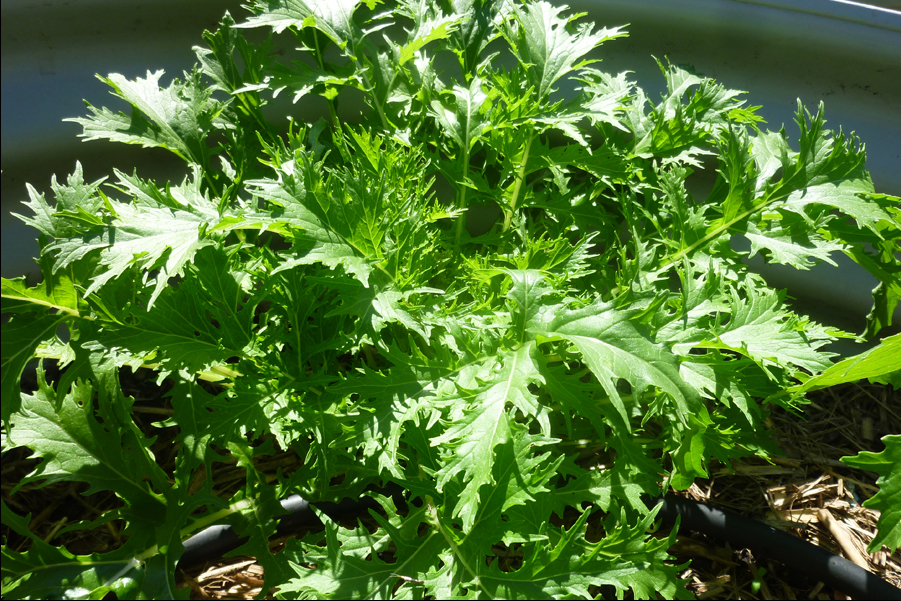Botanical name:
Brassica rapa subsp. nipposinica
Description:
Mizuna is Japanese mustard green that looks a bit like wild rocket. There are lots of different varieties of Mizuna. They all offer 10 to 20 cm long, deeply serrated and feathered leaves, that are about 5 cm wide. The leaves are the vegetable and have a crisp texture and vary in colour from deep green to deep red. If mizuna goes to flower it shows the typical cross-shaped flower of the cabbage family with four petals.
How to grow:
Sow directly 3 mm deep in well drained and rich soil where it’s supposed to grow. Sow in spots 25 cm apart. Put in 3 seeds per spot, 2 cm apart. Firm down and keep moist. Choose a place in the sun or partial shade. Plants appear within 6 to 10 days. Thin the plants to 2 and finally one plant per spot, 25 cm apart and mulch between the plants. Plants need to be watered consistently.
Doesn’t need much fertilising.
Harvest in 8 weeks.
Growing in the neighbourhood:
Likes to grow with lettuce, kale, endive, tatsoi, bok choi, radishes.
Pests and other problems and how we deal with them:
Caterpillars of butterflies, especially the white cabbage butterfly are pests on mizuna. We keep them out by netting the bed with a 5-10 mm net as long as the plants are small. A bit of leaf loss on mature plants is tolerable, if caterpillars take away too much leaf material we spray the plants with a bacterial solution that controls them.
All members of the cabbage family can be affected by a single-celled organism deforming the roots and making it hard for the plants to take up water. The problem is called club root and requires serious soil treatment. We try to avoid this by strictly rotating crops.
Season:
All seasons, but fares better in cooler months.
Seed-saving:
Mizuna cross pollinates with other plants of the cabbage family. In order to collect useful seeds the mother-plant would need to be kept isolated.
How to harvest and use:
Pick leaves. After the growing season the roots and parts of the plant that are tough and not appealing as food anymore go to the compost.
Mizuna has a light pepper/mustard flavour and the leaves offer a beautiful crispness. It is great as part of a salad. Roughly chopped it can also be stir-fried or added to soups. It works well with fruits like apples, pears, peaches, figs, melon. It also combines well with garlic, ginger, mushrooms, chili or grains like farro and wild rice.
